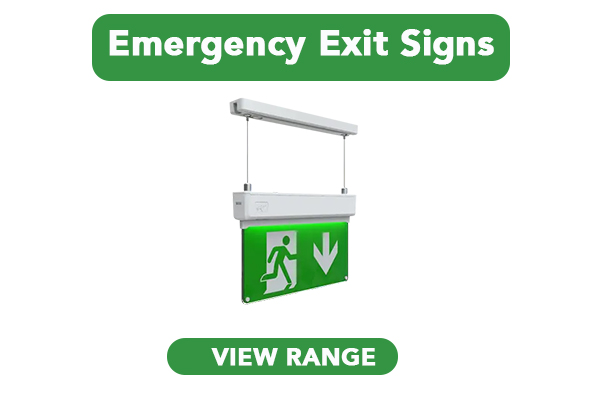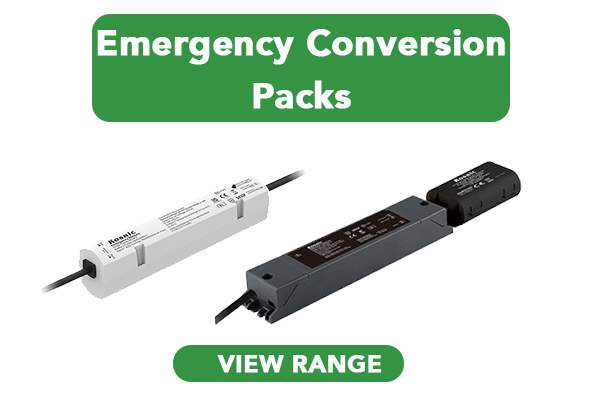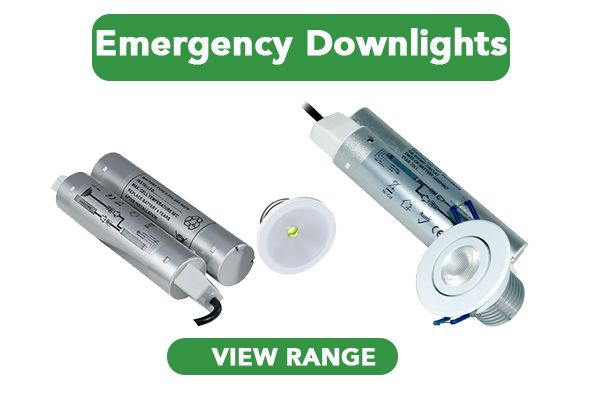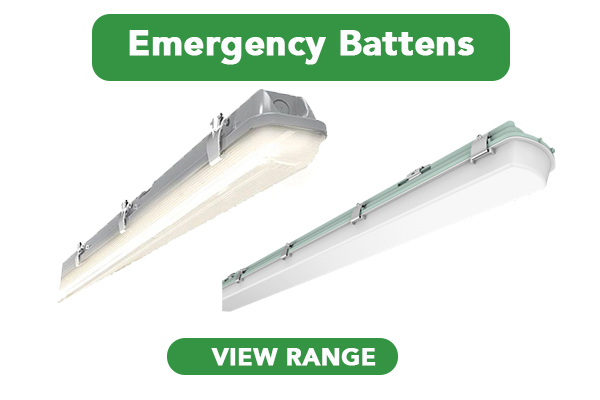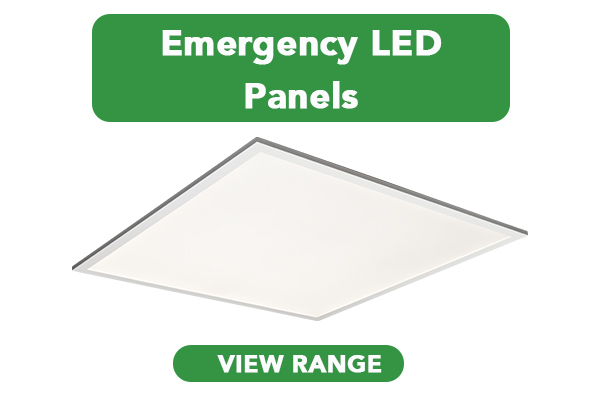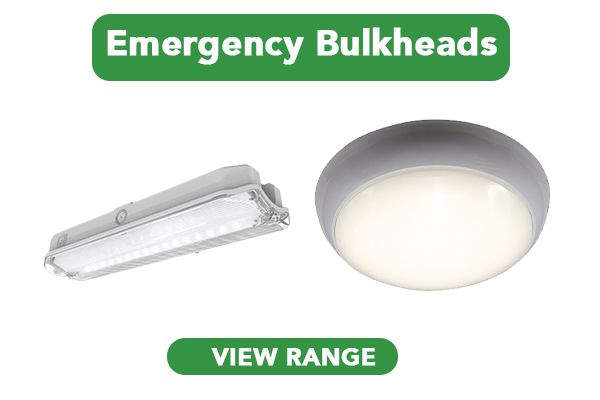Emergency Lighting
EMERGENCY LIGHTING
Emergency lighting is a range of backup lights that will operate fully automatically in the event of a power failure. It provides sufficient illumination to enable all occupants of a building to evacuate the premises safely during a blackout. This is under safety regulation BS5266-1:2016
Emergency Lighting comes with a battery pack that is continuously charged when the mains voltage is present, when that is removed or fails the backup power kicks in for at least 3 hours and dims the light output by 70% in an emergency. These emergency light fittings come as either maintained or non-maintained, maintained lights are always on; whereas the non-maintained emergency lights will only come on once the power fails.
There are different types of Emergency Lighting that you need to consider when complying with the regulations:-
- Escape route lighting: Helps reduce panic and identify evacuation routes and obstacles in emergencies such as a fire or security incident. It ensures that the means of escape out of the premises is effectively identified, sufficiently illuminated, and can be safely used by the occupants of the building. In this range, the Ansell 3-in-1 Exit Sign is very popular as it enables a choice of 3 different mounting options:- suspended, recessed or side arm wall mounting.
- Open Area Emergency lighting: This type of emergency lighting is sometimes called “anti-panic” lighting and assists occupants when trying to find an escape from a building. Businesses install these lights in open areas to provide enough light to be able to escape safely in the event of an emergency or fire. These are areas of undefined escape routes in halls or premises larger than 60m2 floor area or smaller areas if there are additional hazards such as used by many people. We stock emergency led panels, and emergency led battens/Striplights, these are fittings that work in a normal fashion but when the power fails act as an emergency light. We also stock mini emergency downlights that can be used alongside standard light fittings all these emergency fittings have a maintained and non-maintained option.
- High-Risk task area emergency lighting: This provides higher levels of illumination to allow potentially dangerous processes to be shut down or stopped before evacuation, for example turning off major machinery equipment. High-risk task area lighting needs to operate in the event of an emergency to keep them illuminated long enough for workers to cease working, switch machinery or cookers off, put down tools, and move to safety. This is done on a case-by-case basis as part of the site risk assessment so which emergency light fitting is installed depends on a variety of parameters such as industry, location etc.
- Standby lighting: also referred to as stay put or emergency safety lighting: Occupants will be allowed to stay in the building until there is less than 1-hour duration left in the emergency lighting. The system then allows them to be directed or escorted to a low-risk location. It must be clear how long occupants can stay and how the end of the ‘stay put’ period will be indicated. The plan should also clarify what happens at the end of the emergency duration and how occupants will be directed to safe refuges. Usually, power comes from a diesel generator or backup power supply which keeps the lights on until technicians restore mains power.
Another important requirement in complying with emergency lighting regulations is emergency light testing this involves the following
- Checking charge function
- Check lamp operation
- Check battery capacity
- Checking duration
All these tests need to be recorded and the frequency of testing also depends on initial site risk assessment, some of the popular emergency light fittings are self-testing luminaires. This means the luminaire performs its own functionality test and an LED indicator on the device draws attention to any issues.
The biggest difference between a standard emergency fitting and a self-test emergency fitting is that with self-test emergency light fittings the results of each test can only be determined by going to each fitting to check the status of the indicator LED or buzzer. Self-testing emergency lighting checks itself automatically to ensure that the battery and lamp in each emergency light are fully operational. If a problem is detected by the self-test the system will display a visual warning and sound an audible warning.
The standard emergency needs to be physically checked monthly and annually, every month you will need to switch off the mains power supply to the emergency lighting unit. Often, a separate switch with a 'fish key' is installed allowing the testing of emergency lights without having to switch off all the power.
Get in touch with one of our LED lighting experts for a free site survey on your emergency lighting compliance.

